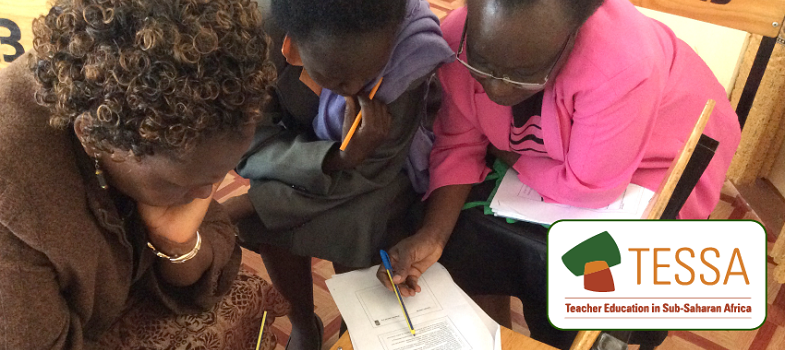2. Making models in groups
Mathematics deals with patterns, so does art, and even in language there are patterns and structures. Thinking scientifically also involves looking for basic patterns. Think of your hands and feet. They have the same basic plan. They are joined to a limb by a joint (wrist/ankle), there is a flat part (palm/sole) and there are five jointed digits (fingers/toes) with hard nails on the upper tip.
Scientists group things by similarities and differences in the basic patterns of their structure or form.
Pupils will enjoy looking for basic patterns in the plants and animals they know and find. One way to find out what your pupils observe about patterns in plants and animals is by asking them to make models. Talking about their models will help them make more detailed observations of the living things.
In Case Study 2 pupils showed their teacher what they knew about plants by building models. This gave a starting point for developing their skills of observing and understanding plants. Activity 2 guides you through a similar exercise that is appropriate for your curriculum.
Case Study 2: Models of plants
At a teacher education session, teachers worked to plan more practical, hands-on science lessons that would help them see what children already knew and could do.
They explored the use of model making as a way to assess what children knew about something like the structure of plants. Then, after comparing each other’s models and observing real plants more carefully, the pupils could choose to improve their old models, or make new ones to show new learning.
One of the teachers, Okoro Mohammed, demonstrated how she had used a cardboard box of scrap material (cloth, cardboard, paper, plastic, old tights, elastic bands, used containers etc.) as a resource for children to build models to show what they already knew about plants. She explained how much more detail the children had taught themselves after comparing each other's work and going out to observe plants more carefully. They included bark and buds, and finer details like leaf veins, or specific patterns of branch formation. Improving their models seemed to give the pupils a real reason to sharpen their observation and extend their understanding of plant structure.
See Resource 4: Plant models for more detail on how to carry out this activity.
Activity 2: Making models of animals
In many parts of Nigeria, entrepreneurs make a living by selling lifelike models of animals. We feel that all pupils are entitled to the chance to extend this natural desire to make models to extend their study of different animals. By asking children to make models, you will also be integrating science with technology and art.
You can add to the classroom displays set up in Activity 1 by getting children to work at making models of different types of local animals like chickens, dogs or cows using appropriate materials. (See Resource 5: Pupils’ models of animals for examples and suggestions.)
We suggest you organise the pupils to work in groups, three or four pupils in each group usually works well. (See Key Resource: Using group work in your classroom [Tip: hold Ctrl and click a link to open it in a new tab. (Hide tip)] to help you decide how you will organise the groups.) You could organise your groups by mixing lower and higher achievers.
Encourage pupils to bring in materials for their models. As they are building the models, move around the classroom, talking to the groups; with younger pupils ask them to name the parts of the animal they are modelling – paws, tails, ears and so on. With older pupils, ask questions about the shapes and functions of the different parts of the animals – how do they help the animal move? eat? keep warm? cool down? sense that predators are near?
Think about how you could encourage your pupils to reflect on their work. Could you ask different groups to comment on the other groups’ models? Make sure you allow time for pupils to talk about their work and to improve it.
Did this activity work well?
Were you surprised by the detail of the pupils’ models?
Is the detail of the pupils’ models accurate?
What could be improved?
Did it help pupils to see similarities and differences between animals?
1. Classifying living things



